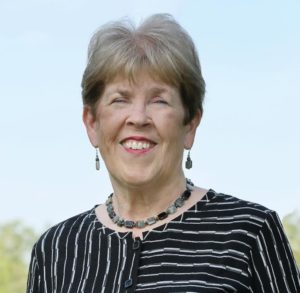 Progressive Voice is a weekly opinion column. The views and opinions expressed in the column are those of the individual authors and do not necessarily reflect the views of their organizations or ARLnow.com.
Progressive Voice is a weekly opinion column. The views and opinions expressed in the column are those of the individual authors and do not necessarily reflect the views of their organizations or ARLnow.com.
By Elaine Furlow
When Dale and Janet Oak shifted into semi-retirement, they got ready to sell their big Arlington home of 25 years and find a space that better suited their needs.
“We looked at condos in Rosslyn, but they did not seem like ‘us,'” Janet Oak recalled.
Nor was the frenetic pace in Clarendon, or the dense cityscape in much of Ballston.
“We didn’t want to put all our equity into the next place, and it was hard to find that middle ground.” The Oaks wound up in a relatively new condo building in an area “that is walkable to shops, quiet and fits our lifestyle,” Janet Oak said.
It’s in Falls Church.
As comfortable middle-class baby boomer homeowners in Arlington get ready for their next stage, many are planning on 20+ years of active living ahead. After hard-charging careers, they have time, talents and money to keep investing in Arlington.
Some may want to downsize their homes, but often, it’s a matter of “right-sizing” — leaving behind aging brick colonials with stairs or 4-bedroom houses with too much upkeep.
Renovating one’s current home to age-in-place is not always feasible, yet options aren’t great. Small, quality houses with one-floor living are scarce. And most townhouses have many stairs, a big minus as boomers (those born between 1946 and 1964) think of aging knees and hips down the road.
“I know what’s out there, and it is bleak,” said Karen Close, a long-time real estate agent with Century 21. “Arlington doesn’t have a plan to deal with boomers.”
Arlington should be more alert to this need, so it doesn’t lose these successful contributors to our county. Non-boomers have a stake, too, since new solutions might free up our tight single-family housing stock. Can innovative builders/developers and far-sighted leaders envision a different, more livable type of home?
Older adults planning ahead are looking for one-floor living, a flat outside entry, quality construction, wide doorways, ample storage and features with the future in mind (like a large, walk-in shower with a bench).
Oh, and a reasonable price and attractive exterior.
“Wouldn’t you love something with the look of a townhouse, but built with single levels or with elevators, so you don’t have to do stairs,” Janet Oak said.
Yes, it’s tough to find the land. Yet we could repurpose (and likely rezone) certain commercial space. Imagine that attractive, well-built bank building, now empty, as the centerpiece of a modest-sized, innovative condo development.
Builders and developers could incorporate the desired features without drifting into “senior-only” territory since well-designed small-footprint homes will work for many ages. And most boomers also would like to keep interacting with a mix of neighbors, including school kids.
“I work with many older people who are looking for a lateral move, a different kind of space specific to their needs and lifestyles,” Betsy Twigg, a real estate agent in Arlington for 28 years, said. “There is a huge demand for this. If you built 50 spaces with what people want, you’d sell within a month.”
Yet except for the high-end market, builders and developers have not yet seen incentive to create something other than traditional condos, townhouses and gigantic single-family homes in Arlington.
Adjusting county zoning could give them a needed nudge. There is a market there, and “growing by the day,” said real estate agent Close. “People in their 60s and 70s are not ready to pack it in.”
People do want to age-in-place, and often that means “in Arlington — but not my current house.” Some smart planning, incentives and civic leadership can make that happen. And Arlington would keep an important kind of human diversity — of age, deep community roots, with much still to contribute.
Elaine Furlow is a longtime Arlington resident who recently retired as director of enterprise strategy for AARP.

